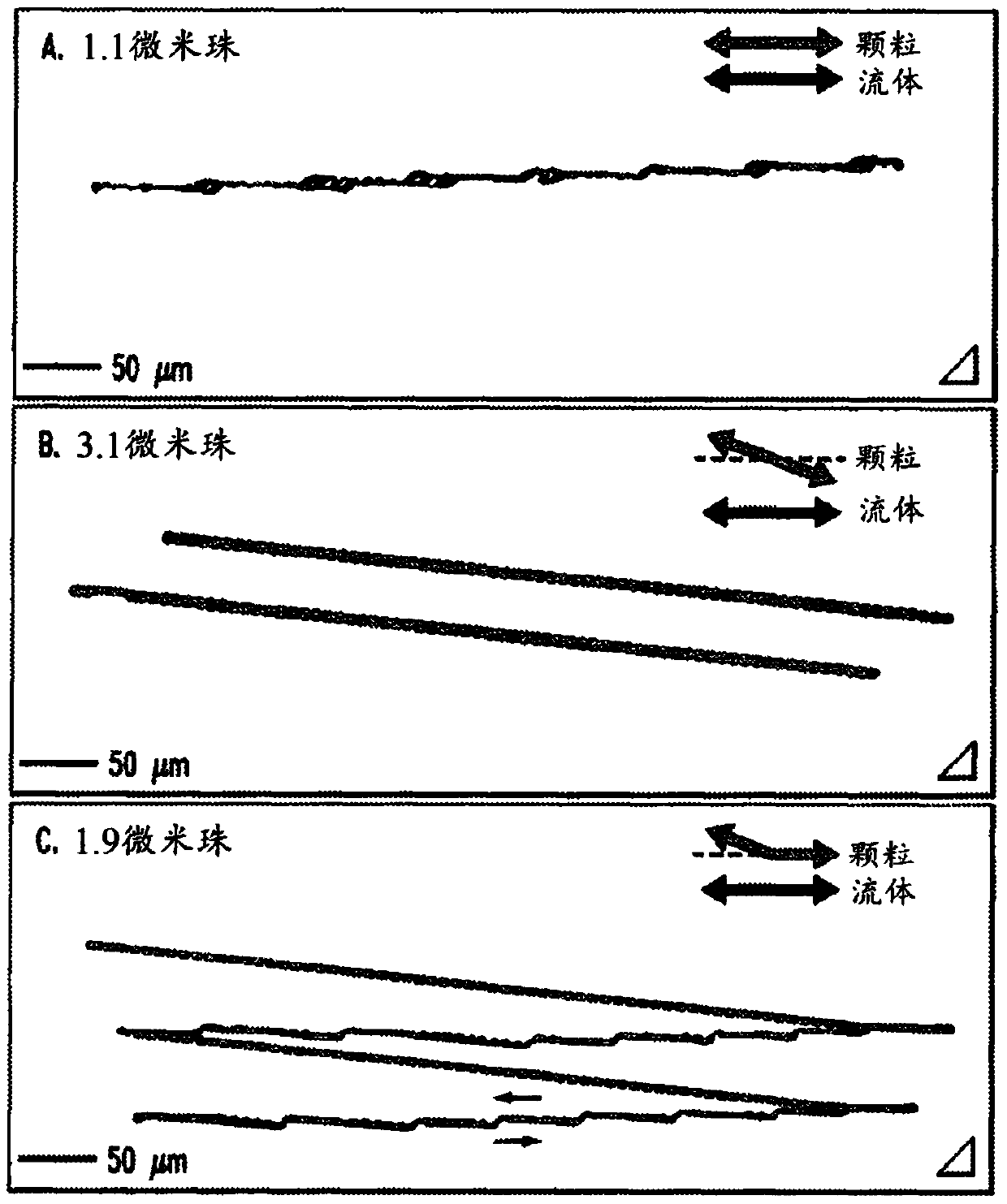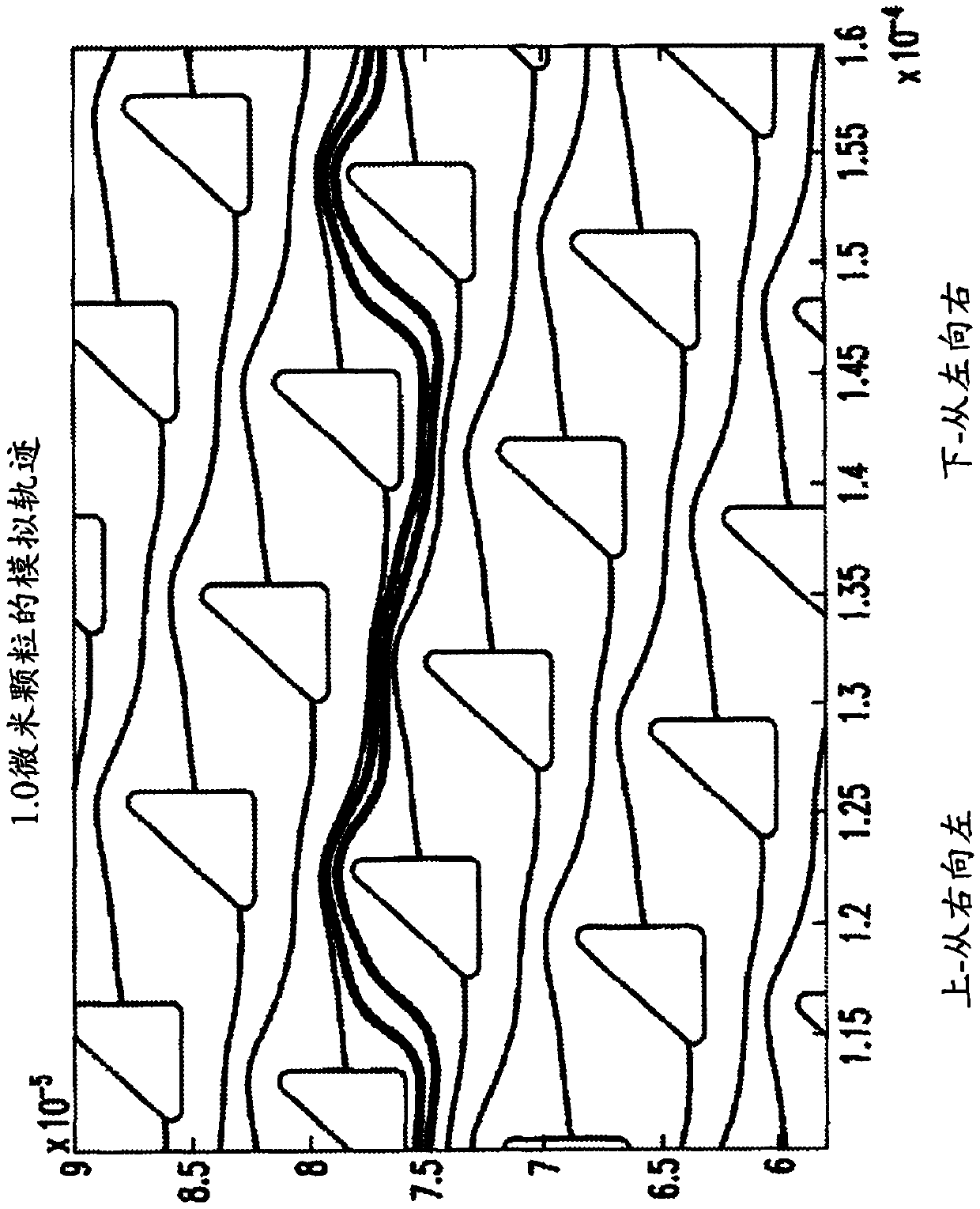On-chip microfluidic processing of particles
A particle and fluid communication technology, applied in laboratory containers, gas/liquid distribution and storage, instruments, etc., can solve problems such as height variability
- Summary
- Abstract
- Description
- Claims
- Application Information
AI Technical Summary
Problems solved by technology
Method used
Image
Examples
Embodiment 8
[0454] Example 8 describes the use of an on-chip cleaning system.
[0455] In some cases, the size-based separation methods described herein do not use centrifugation and / or sedimentation. In some cases, the size-based separation methods described herein use centrifugation or sedimentation.
[0456] (w) cone angle
[0457] The obstacles or posts may be cylindrical. In some cases, obstacles on the device are not perfectly cylindrical. The obstacles or at least 50% of the obstacles in the array may have Taper angles of 1.5°, 1°, 0.5°, 0.4°, 0.3°, 0.2° or 0.1°. Obstacles may have a cone angle of 0°. The obstacles, or at least 50% of the obstacles in the array, may have a range of about 0.1° to about 1°, about 1° to about 2°, about 2° to about 3°, about 3° to about 4°, or about 1° to about 4° cone angle.
[0458] H. Materials of Construction and Surface Chemistry
[0459] In some embodiments, the device is fabricated by heat molding PMMA and / or polycarbonate. Thermoplasti...
Embodiment 1
[0649] Example 1: Manufacture
[0650] Chips are fabricated using highly anisotropic deep reactive ion etching (DRIE) in crystalline silicon polished substrates using a "Bosch" process that cycles between etch and sidewall passivation steps, so the pillar side The walls are only ~1° from vertical. Optical lithography defines the pattern. Through-substrate vias are micromachined to support fluid loading / unloading from the backside, which mate with plastic fixtures with connectors for input source and output collection. Chips were pretreated with triblock copolymer F108 (2 g / l) to reduce cell adhesion. Tuning chip design parameters (eg, critical size for bouncing behavior) for high yield.
Embodiment 2
[0651] Example 2: Operation
[0652] Cell surface antigens targeting multiple leukocyte differentiation (i.e., CD45 / CD14 / 15 (to determine single granulocyte type count), CD3 / 4 / 8 (to count common T lymphocyte subsets), CD19 / 56 / 14 (to identify B lymphocytes and NK cells), CD45 / CD235a / CD71 (to identify any contaminating erythroid cells)) and incubation with viability dyes ("immunostaining") Leukocytes from 0.1ml-1ml red blood cell lysed whole blood (optionally diluted with buffer (calcium and magnesium free PBS containing 1% BSA and 4mM EDTA) and optionally spiked with leukemic cells) . This is done routinely (ie, off-chip). Cells are then washed and concentrated to ~1-10 million cells / mL using a DLD chip designed to move leukocytes and leukemia cells from an initial stream of input cell suspension containing fluorescent monoclonal antibodies to Outflow of fresh buffer against the chip wall ( Figure 17B ).
[0653] The method can recover >90% of the input leukocytes and ...
PUM
| Property | Measurement | Unit |
|---|---|---|
| diameter | aaaaa | aaaaa |
| volume | aaaaa | aaaaa |
| depth | aaaaa | aaaaa |
Abstract
Description
Claims
Application Information
 Login to View More
Login to View More - R&D
- Intellectual Property
- Life Sciences
- Materials
- Tech Scout
- Unparalleled Data Quality
- Higher Quality Content
- 60% Fewer Hallucinations
Browse by: Latest US Patents, China's latest patents, Technical Efficacy Thesaurus, Application Domain, Technology Topic, Popular Technical Reports.
© 2025 PatSnap. All rights reserved.Legal|Privacy policy|Modern Slavery Act Transparency Statement|Sitemap|About US| Contact US: help@patsnap.com



